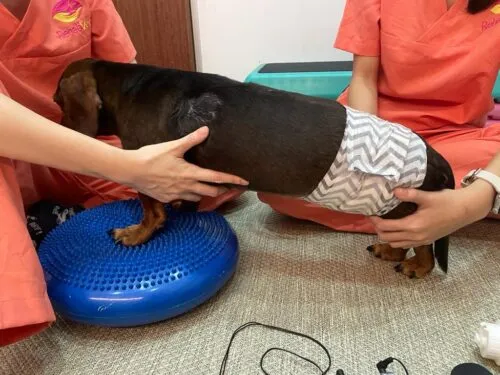Cancer in pets is an unfortunate reality that many pet owners must face. It can be a challenging and emotional journey for both the pet and their family. Thankfully, advances in veterinary medicine have made it possible to treat various types of cancers more effectively, giving pets a better chance at recovery. One such treatment method that plays an important role in helping pets regain their strength and function is rehabilitation. This article will explore how rehabilitation can aid in the recovery of pets with cancer and improve their overall quality of life.
The Importance of Rehabilitation for Cancer Patients
Rehabilitation is a crucial component of cancer treatment for pets, as it addresses the physical, emotional, and functional aspects of their recovery. It can help pets regain their strength and mobility, reduce pain and discomfort, and improve their overall well-being. Some of the benefits of rehabilitation for pets with cancer include:
- Enhanced Mobility and Strength: Many cancer treatments, such as surgery, radiation, or chemotherapy, can lead to weakness and mobility issues. Rehabilitation exercises can help pets rebuild their muscle mass, increase their range of motion, and improve their balance and coordination.
- Pain Management: Cancer and its treatments can cause significant pain and discomfort in pets. Rehabilitation therapies like massage, therapeutic ultrasound, and cold laser therapy can help manage and reduce pain.
- Emotional Support: A pet’s emotional well-being is vital during cancer treatment. Rehabilitation can help reduce stress, anxiety, and depression by providing a positive and engaging environment for pets.
Key Rehabilitation Modalities for Pets with Cancer
There are various rehabilitation modalities that can be customized to fit the needs of pets with cancer. Some of the most commonly used therapies include:
- Physical Therapy: This involves a combination of stretching, strengthening, and range-of-motion exercises that help pets regain their mobility, strength, and function. These exercises can be done both in a rehabilitation center and at home under the guidance of a certified rehabilitation professional.
- Massage Therapy: Massages can help reduce pain, increase circulation, and promote relaxation in pets with cancer. They can also help break down scar tissue and adhesions resulting from surgery.
- Hydrotherapy: Water-based therapies, such as underwater treadmill sessions or swimming, can help pets regain strength and mobility in a low-impact, supportive environment.
- Hyperbaric Oxygen Therapy (HBOT): HBOT is a highly effective at reducing inflammation by constructing leakage in the blood vessels. Animals with cancer suffer a huge amount of inflammation around the cancer cells. Inflammation causes pain and hence reduces appetite and general well-being. Hyperbaric Oxygen Therapy helps to reduce inflammation and pain in cancer patient, however they is not enough evidence to show that it can reduce the size of cancer cells. Secondly, cancer cells strive on a hypoxic state i.e. environment with low oxygen level. Hyperbaric Oxygen Therapy oxygenates the body and slows down the growth of cancer cells.
- Acupuncture: This traditional Chinese medicine technique can help alleviate pain, reduce inflammation, and stimulate the immune system, supporting pets with cancer during their recovery process.
Creating a Customized Rehabilitation Plan for Your Pet
Each pet’s cancer journey is unique, and their rehabilitation plan should be tailored to their specific needs and abilities. A certified rehabilitation professional will assess your pet’s condition, consider factors such as age, cancer type, and treatment plan, and develop a comprehensive and customized rehabilitation program to help your pet recover and thrive.
The Role of Pet Owners in the Rehabilitation Process
As a pet owner, your involvement in your pet’s rehabilitation process is crucial. You can provide emotional support, follow the rehabilitation professional’s recommendations, and perform home-based exercises to help your pet progress. Maintaining open communication with the rehabilitation team and your pet’s primary veterinarian is essential for ensuring the best possible outcomes.
Conclusion
Rehabilitation plays a significant role in the recovery of pets with cancer. It can help them regain their strength, mobility, and function, while also providing emotional support and improving their overall well-being. With the right rehabilitation plan and the dedication of their loving pet owners, pets with
cancer can recover more effectively and enjoy a better quality of life
during and after treatment.
In conclusion, the benefits of rehabilitation for pets with cancer are substantial. It not only aids in their physical recovery but also provides emotional support and improves their overall well-being. By working closely with a certified rehabilitation professional and playing an active role in the process, pet owners can help their beloved companions overcome the challenges associated with cancer and regain their strength, mobility, and zest for life. With proper care, rehabilitation can pave the way for a brighter, healthier future for pets battling cancer.
